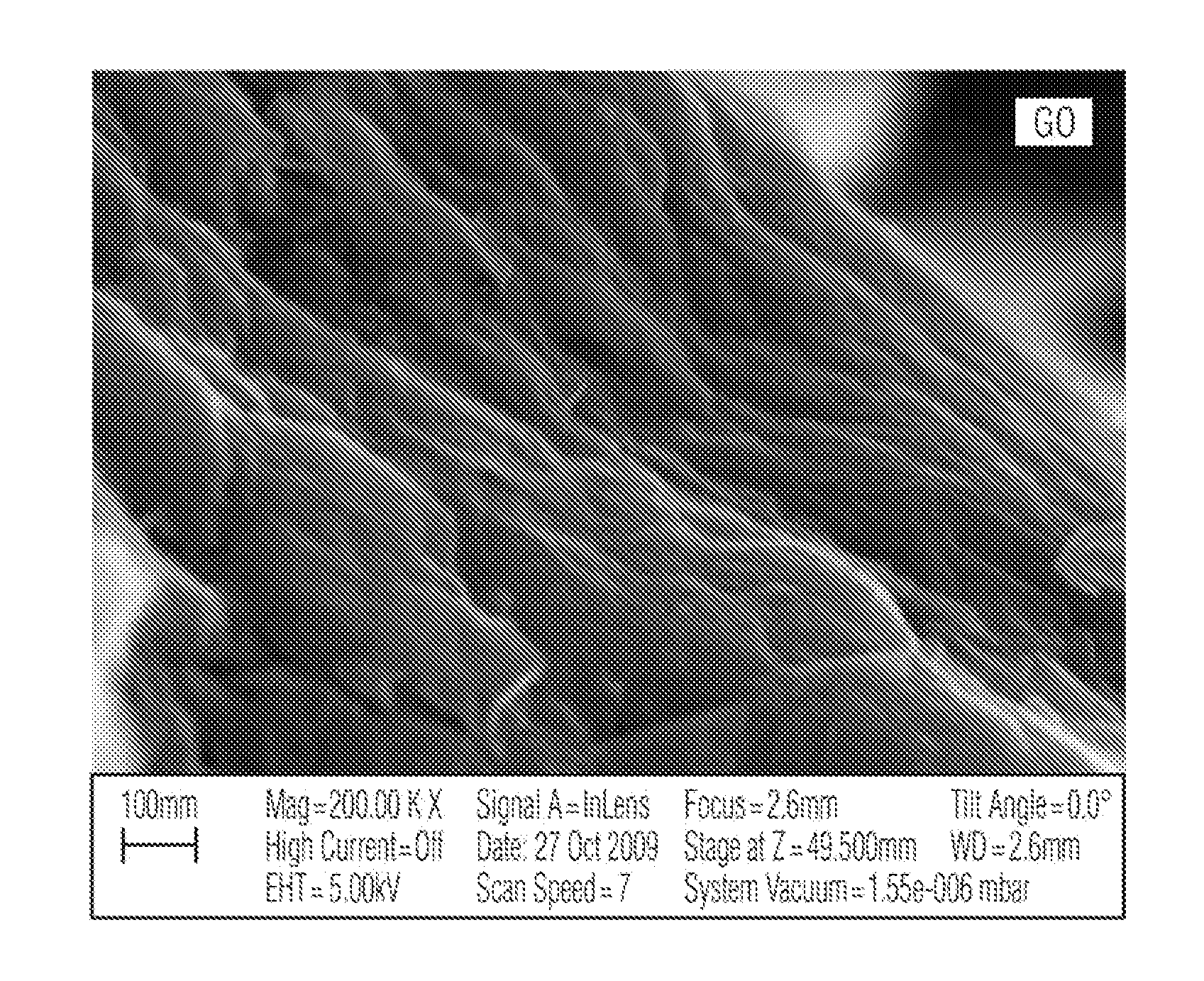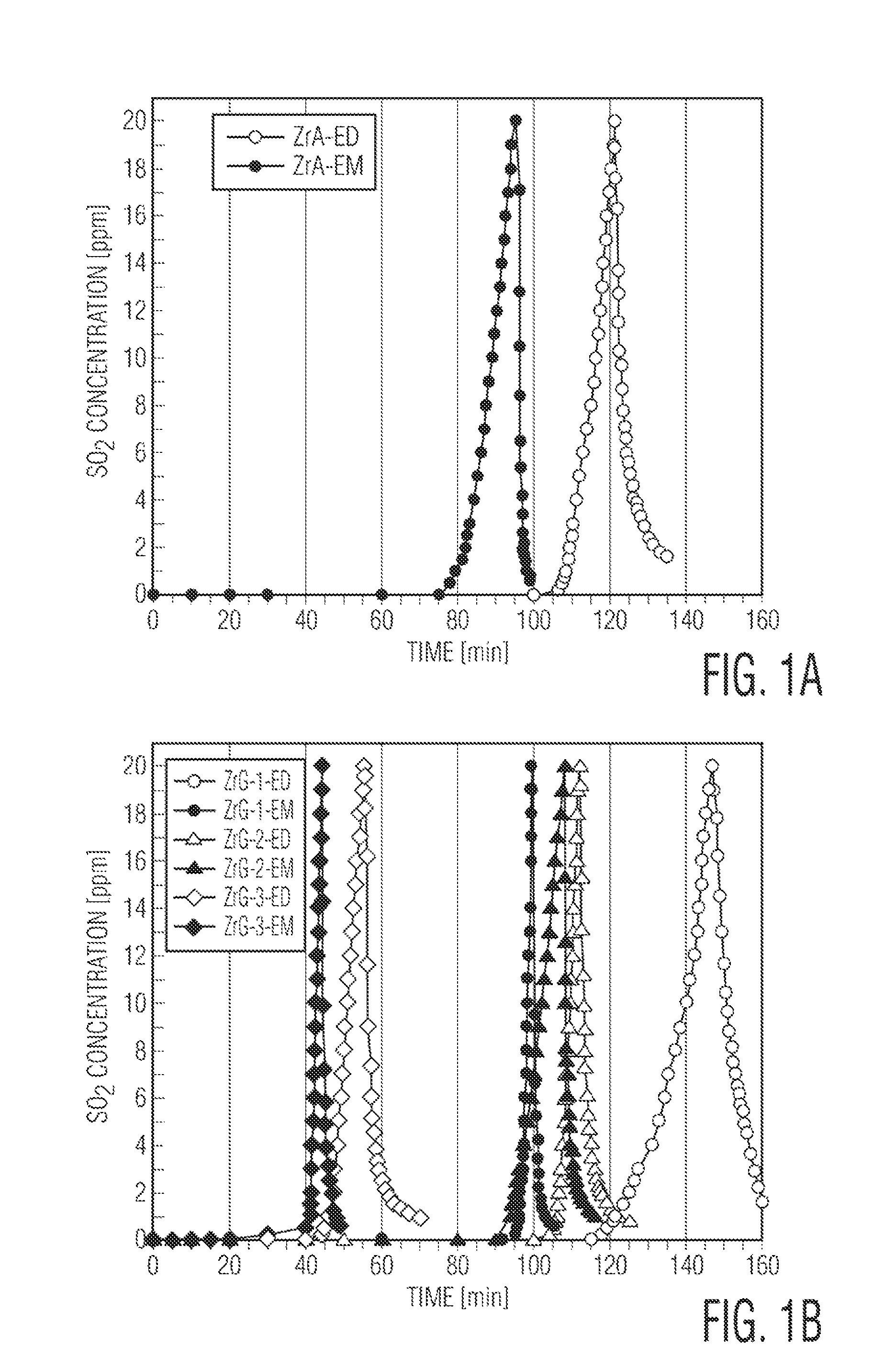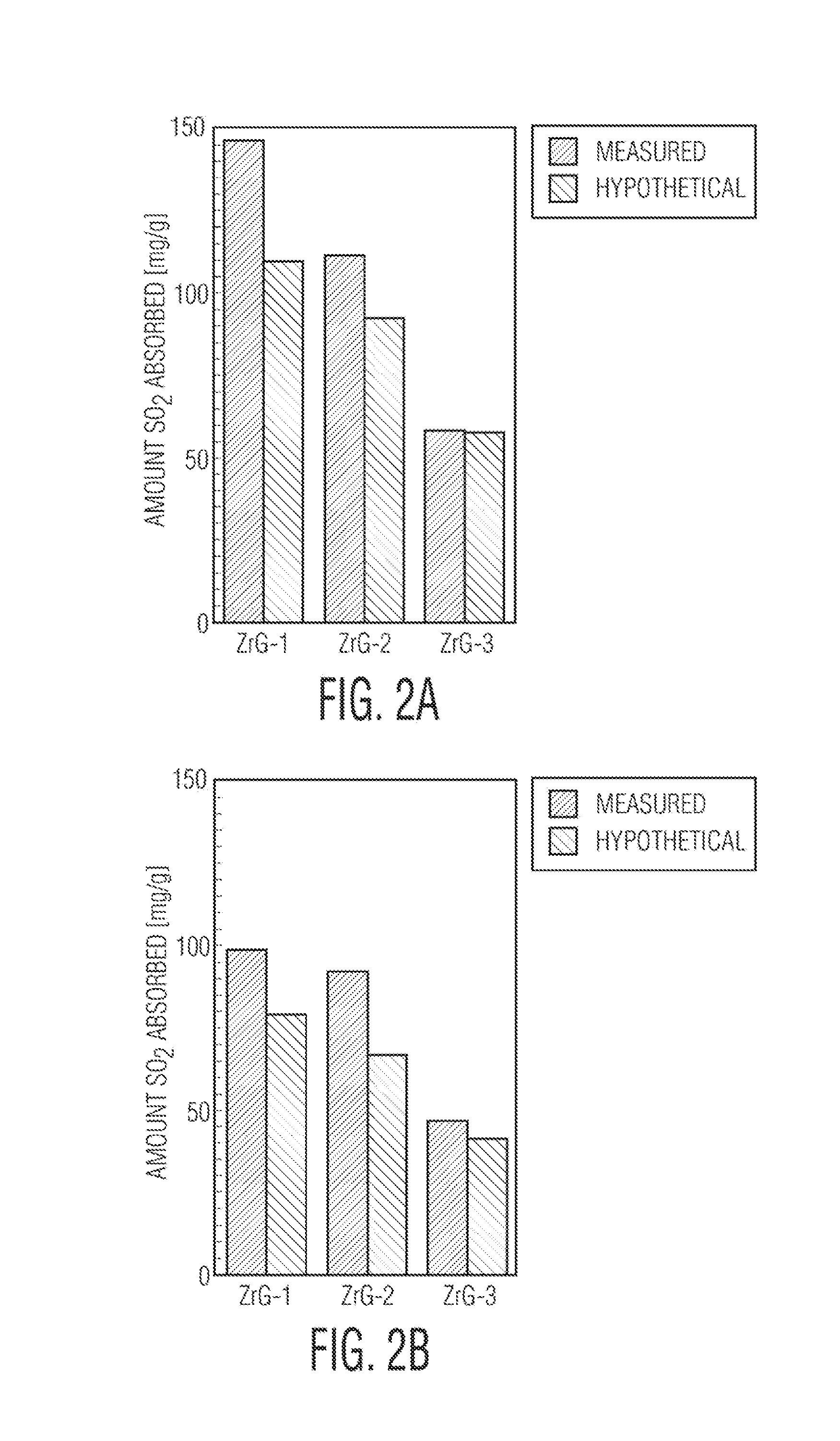Compositions comprising zirconium hydroxide and graphite oxide and methods for use
a technology of which is applied in the field of compositions comprising zirconium hydroxide and graphite oxide and methods for use, can solve the problems of human health risk and inadequate adsorption materials, and achieve enhanced adsorption capacity of toxic industrial compounds and unique synergistic properties
- Summary
- Abstract
- Description
- Claims
- Application Information
AI Technical Summary
Benefits of technology
Problems solved by technology
Method used
Image
Examples
example 1
Preparation of Zirconium Hydroxide and Graphite Oxide Composition
[0056]Graphite oxide (GO) was synthesized by oxidation of graphite using the Hummers method, whereby graphite is treated with essentially a water-free mixture of concentrated sulfuric acid, sodium nitrate and potassium permanganate at temperatures of about less than 45° C. for about less than two hours. The resulting graphite oxide powder was dispersed in amounts of 5 wt %, 20 wt %, and 50 wt % based on the final mass of the material, respectively, in corresponding 1.0 L of 0.05 M sodium hydroxide. The resulting suspensions were subsequently each stirred for about 3 hours.
[0057]Thereafter, about 250 mL of 0.05 M zirconium (IV) chloride was added each of the dispersed graphite oxide suspensions at a rate of about 0.6 mL / min using a Titronic Universal (SCHOTT). The resulting product was extensively washed with distilled water until neutral pH is achieved and no traces of chloride ion were observed in the suspension. Fina...
example 2
Experimental Data Associated with Adsorption of SO2 Using Graphite Oxide / Zr(OH)4 Composition
[0059]Compositions comprising zirconium hydroxide and graphite oxide were analyzed for adsorption activity on sulfur dioxide at ambient conditions. The results indicated enhanced adsorption of sulfur dioxide in the present composition due to formation of new basic sites and porosity derived from interaction between zirconium hydroxide and oxygen groups attached to graphene layers. The combination of physical adsorption and reactive adsorption of sulfur dioxide promotes the retention process and the resulting formation of sulfites, while the graphene component promotes catalytic oxidation of sulfur dioxide to sulfates.
Materials:
[0060]The materials prepared in Example 1 were studied as adsorbents for sulfur dioxide in the dynamic tests described below under dry (D) and wet conditions (M). After the concentration of SO2 in the effluent gas reached 20 ppm the samples were considered as exhausted ...
example 3
Adsorption of H2S Using Graphite Oxide / Zr(OH)4 Composition
Experimental
Materials:
[0099]The materials prepared in Example 1 were studied as adsorbents for hydrogen sulfide in the dynamic tests described below under dry (D) and wet conditions (M). After the concentration of H2S in the effluent gas reached 100 ppm the samples were considered as exhausted for hydrogen sulfide adsorption. Such samples are identified with letter “E” added to their names.
Methods:
H2S Breakthrough Capacity
[0100]Dynamic tests were carried out at room temperature to evaluate the capacity of the adsorbents for H2S removal from moist air. Adsorbent samples were packed into a glass column (internal diameter 9 mm). A bed volume used was 1.2 cm3 (with the mass of adsorbent between 1.27 to 1.45 g). Before the experiments in moist air the samples were prehumidified with moist air (relative humidity 70% at 25° C.) for two hours. The amount of water adsorbed was estimated from the increase in the sample weight. Humid ai...
PUM
| Property | Measurement | Unit |
|---|---|---|
| pore size | aaaaa | aaaaa |
| pore size | aaaaa | aaaaa |
| pore sizes | aaaaa | aaaaa |
Abstract
Description
Claims
Application Information
 Login to View More
Login to View More - R&D
- Intellectual Property
- Life Sciences
- Materials
- Tech Scout
- Unparalleled Data Quality
- Higher Quality Content
- 60% Fewer Hallucinations
Browse by: Latest US Patents, China's latest patents, Technical Efficacy Thesaurus, Application Domain, Technology Topic, Popular Technical Reports.
© 2025 PatSnap. All rights reserved.Legal|Privacy policy|Modern Slavery Act Transparency Statement|Sitemap|About US| Contact US: help@patsnap.com



